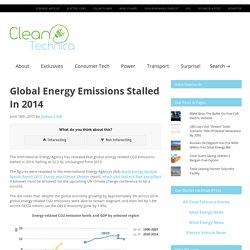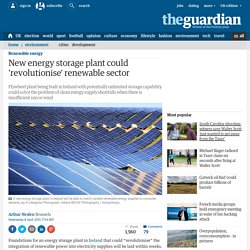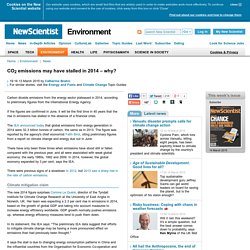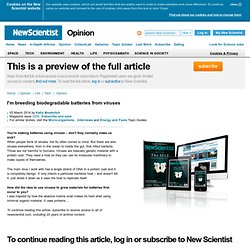

Nel 2014 le rinnovabili al 37,5% della domanda e al 43,3% della produzione elettrica nazionale. Global Energy Emissions Stalled In 2014. June 16th, 2015 by Joshua S Hill The International Energy Agency has revealed that global energy-related CO2 emissions stalled in 2014, halting at 32.2 Gt, unchanged from 2013.

The figures were revealed in the International Energy Agency’s (IEA) World Energy Outlook Special Report 2015: Energy and Climate Change report, which also laid out four key pillars it believes must be achieved for the upcoming UN climate change conference to be a success. The IEA notes that, despite the global economy growing by approximately 3% across 2014, global energy-related CO2 emissions were able to remain stagnant, and even fell by 1.8% across OECD nations (as the OECD economy grew by 1.8%).
Energy-related CO2 emission levels and GDP by selected region This continues “the clear break,” as the IEA describes it, between the stereotypical assumption economic growth must be tied to energy-related emissions. Slashdot. World's First All-Electric Battery-Powered Ferry. Air Quality Published on June 13th, 2015 | by Cynthia Shahan June 13th, 2015 by Cynthia Shahan A Norwegian emission-free ferry called the Ampere was granted the esteemed “Ship of the Year” award as the SMM trade show in September 2014.

UBS Analysts: Solar Will Become the ‘Default Technology of the Future’ Within a decade, solar photovoltaics could account for 10 percent of electricity supply globally, beating out coal and nuclear as "default" power generation technologies.

That's the conclusion of a new analysis from investment bank UBS, which found that global installed solar capacity will more than triple between now and 2025, and then triple again between 2025 and 2050. By the middle of the century, UBS estimates that nearly 3,000 gigawatts of solar will be installed worldwide. "We believe solar will eventually replace nuclear and coal, and [be] establish[ed] as the default technology of the future to generate and supply electricity," wrote the analysts.
Here's what it would take for the US to run on 100% renewable energy. It is technically and economically feasible to run the US economy entirely on renewable energy, and to do so by 2050.

That is the conclusion of a new study in the journal Energy & Environmental Science, authored by Stanford scholar Mark Z. Jacobson and nine colleagues. Jacobson is well-known for his ambitious and controversial work on renewable energy. Engineers develop state-by-state plan to convert US to 100% clean, renewable energy by 2050. One potential way to combat ongoing climate change, eliminate air pollution mortality, create jobs and stabilize energy prices involves converting the world's entire energy infrastructure to run on clean, renewable energy.

This is a daunting challenge. But now, in a new study, Mark Z. Jacobson, a professor of civil and environmental engineering at Stanford, and colleagues, including U.C. New energy storage plant could 'revolutionise' renewable sector. Foundations for an energy storage plant in Ireland that could “revolutionise” the integration of renewable power into electricity supplies will be laid within weeks.

The plant will use a motor-generated flywheel to harness kinetic energy from the grid at times of over-supply. CO2 emissions may have stalled in 2014 – why? - environment - 13 March 2015. Carbon dioxide emissions from the energy sector plateaued in 2014, according to preliminary figures from the International Energy Agency.

If the figures are confirmed in June, it will be the first time in 40 years that the rise in emissions has stalled in the absence of a financial crisis. The IEA announced today that global emissions from energy generation in 2014 were 32.3 billion tonnes of carbon, the same as in 2013. CO2 Pollution Stops Swelling Even as Global Economy Grows. Solar, wind and other renewables are making such a big difference in greenhouse gas emissions worldwide that global emissions from the energy sector flatlined during a time of economic growth for the first time in 40 years.

The International Energy Agency announced Friday that energy-related CO2 emissions last year were unchangedfrom the year before, totaling 32.3 billion metric tons of CO2 in both 2013 and 2014. It shows that efforts to reduce emissions to combat climate change may be more effective than previously thought. Facebook. Solar thermal magazine. Electric Rail Lines- High-Efficiency System Reduces Energy Consumption and Enables Sale of Excess Power for Utility Grid Frequency Regulation SAN DIEGO, CA. – Maxwell Technologies, Inc.

(Nasdaq: MXWL) announced today that it is supplying ultracapacitors to ABB, the global leader in power and automation solutions, for ABB’s recent contract win to upgrade Philadelphia area rail lines. We'll live to see a low-carbon world: UN climate chief - opinion - 19 March 2014. New wind generation technology produces 6 times more energy. I'm breeding biodegradable batteries from viruses - opinion - 05 March 2014. You're making batteries using viruses – don't they normally make us sick?

When people think of viruses, the flu often comes to mind. But there are also viruses everywhere, from in the ocean to inside the gut, that infect bacteria. Those are not harmful to humans. Viruses are basically genetic material with a protein coat. Renewables now provide 14% of Europe’s energy. Date 10 March 2014 LONDON: The European Union is making considerable progress towards the 2020 European target of 20% renewable energy use, new figures from the Eurostat database highlight. The data shows that in 2012, sustainable energy was estimated to have contributed 14.1% of gross final energy consumption, compared with just 8.3% in 2004. Member States such as Sweden, Denmark and Austria have recorded the greatest increases, with renewable power now accounting for over half of Sweden’s energy. Indeed, by the end of 2012 the Nordic nation had already met its national 2020 target.
Notably, a full eight years ahead of schedule, Bulgaria and Estonia also met their 2020 targets of 16% and 25% respectively in 2012. Batteries of ice, iron and glass store renewable power - tech - 07 March 2014. Some unusual materials are being turned into batteries to allow us to increase our reliance on renewable energy WHEN the wind stops blowing and turbines slow down, we have to resort to coal and gas-powered stations for our energy needs. This unpredictability makes it hard to rely on renewable sources for a constant energy supply. Storage is one solution, but traditional batteries that can hold enough power are expensive. Trailblazing power plant is first to bury its carbon - environment - 05 March 2014. A coal-fired power station in Canada is launching carbon capture and storage on a commercial scale.
Could this make burning fossil fuels guilt-free? RISING above the endless plains of Saskatchewan, Canada's Boundary Dam power plant looks like any other: giant boxes, tall red-and-white striped chimneys, and a mess of pipes and power lines. But appearances can be deceptive. In the coming months, it will become the first power plant to suck the carbon dioxide out of its flue before the gas reaches the air. It is blazing the trail for carbon capture and storage (CCS) around the world. Each year, Unit 3 of SaskPower's Boundary Dam plant emits 1.1 million tonnes of carbon dioxide. Is Energy Efficiency Finally Reducing the Use of Electricity? For most of the past century, electricity sales and economic activity have fluctuated in tandem. This was certainly true in 2008, when an economic recession saw sales dip sharply after reaching a historic high the year before. Since then, however, the trajectories of economics and electricity appear to have diverged. While the U.S. gross domestic product has crawled steadily back to pre-recession levels, electricity sales experienced a brief lift only to fall again over the past two years.
In 2012, for example, sales were 1.9 percent below their 2007 peak, according to a recent white paper by the American Council for an Energy-Efficient Economy (ACEEE), and sales over the first 10 months of 2013 are even lower than in the corresponding period in 2012. The factors driving electricity consumption are complex, and there's little doubt that lingering economic doldrums, particularly in the manufacturing sector, continue to play a role. Artificial leaf jumps developmental hurdle. In a recent early online edition of Nature Chemistry, ASU scientists, along with colleagues at Argonne National Laboratory, have reported advances toward perfecting a functional artificial leaf. Designing an artificial leaf that uses solar energy to convert water cheaply and efficiently into hydrogen and oxygen is one of the goals of BISfuel – the Energy Frontier Research Center, funded by the Department of Energy, in the Department of Chemistry and Biochemistry at Arizona State University.
Hydrogen is an important fuel in itself and serves as an indispensible reagent for the production of light hydrocarbon fuels from heavy petroleum feed stocks. Society requires a renewable source of fuel that is widely distributed, abundant, inexpensive and environmentally clean. Society needs cheap hydrogen. The researchers took a closer look at how nature had overcome a related problem in the part of the photosynthetic process where water is oxidized to yield oxygen. High-Powered Lasers Deliver Fusion Energy Breakthrough. Green energy pays for itself in lives saved from smog - environment - 22 September 2013. Switching to clean energy might seem like the expensive option, but it would pay for itself almost immediately, according to a new analysis.
The reason? Reducing our reliance on fossil fuels will cut air pollution, saving lives and therefore money. Ultrafast technique unlocks design principles of quantum biology. University of Chicago researchers have created a synthetic compound that mimics the complex quantum dynamics observed in photosynthesis and may enable fundamentally new routes to creating solar-energy technologies. Engineering quantum effects into synthetic light-harvesting devices is not only possible, but also easier than anyone expected, the researchers report in the April 18 edition of Science Express.
First algae powered building goes up in Hamburg. Smart heat nets fire the next energy revolution - tech - 15 April 2013. DEEP in the tunnels of the London Underground, as in many subway systems around the world, it's so hot it feels like hell. Energy Storage Breakthrough: Large And Powerful Redox Flow Battery Developed. BioSolar announces first sale of BioBacksheet—solar panel part made from cotton and beans. A quantum dot energy harvester: turning waste heat into electricity on the nanoscale.
Wind power is now cheaper than coal in some countries - environment - 11 February 2013. Wind Enegy Surpasses Nuclear as China's 3rd Largest Source of Electrical Power. Midnight sun: How to get 24 hour solar power - 23 January 2013.